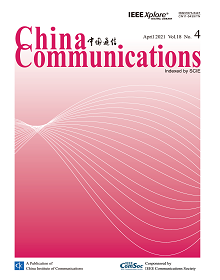EMERGING TECHNOLOGIES & APPLICATIONS
Zixi Cui, Pengshuai Cui, Yuxiang Hu, Julong Lan, Fang Dong, Yunjie Gu, Saifeng Hou
2021, 18(4): 198-212.
Cloud providers (e.g., Google, Alibaba, Amazon) own large-scale datacenter networks that comprise thousands of switches and links. A load-balancing mechanism is supposed to effectively utilize the bisection bandwidth. Both Equal-Cost Multi-Path (ECMP), the canonical solution in practice, and alternatives come with performance limitations or significant deployment challenges. In this work, we propose Closer, a scalable load balancing mechanism for cloud datacenters. Closer complies with the evaluation of technology including the deployment of Clos-based topologies, overlays for network virtualization, and virtual machine (VM) clusters. We decouple the system into centralized route calculation and distributed route decision to guarantee its flexibility and stability in large-scale networks. Leveraging In-band Network Telemetry (INT) to obtain precise link state information, a simple but efficient algorithm implements a weighted ECMP at the edge of fabric, which enables Closer to proactively map the flows to the appropriate path and avoid the excessive congestion of a single link. Closer achieves 2 to 7 times better flow completion time (FCT) at 70% network load than existing schemes that work with same hardware environment.
